In the late 1990s, the construction cost of the Ram temple, according to unofficial estimates, was pegged at Rs 120 crore. Adjusting for inflation to the current financial year, the edifice would entail an investment of nearly Rs 450 crore, excluding the land cost.
Virendra Singh Rawat reports.

With a five-judge Constitution Bench of the Supreme Court clearing the way for a Ram temple at the 2.77-acre disputed site in Ayodhya, the focus now shifts to the proposed grand edifice.
One of the early votaries of the Ram temple movement, the Vishva Hindu Parishad (VHP), has been chiselling and carving pink sandstones at the workshop of Ram Janambhoomi Nyas at Karsevakpuram in this temple town since 1989, in anticipation of the construction of the temple.
The compound prominently displays a model of the proposed Ram temple near its entrance, which over the past decades has acquired a place of reverence for those who throng Ayodhya and visit the workshop to marvel at the craftsmanship of artisans, mostly from Rajasthan.
The stones, too, are transported from Bharatpur in Rajasthan.
Nearly 65 per cent of the carving work on the pillars has been completed, VHP spokesperson Sharad Sharma said, even as he remained cagey on the issue of the estimated cost on the proposed temple.
But with the trust for the construction of the temple to be constituted in three months, the VHP's blueprint of the grandiose temple may come in handy.
The VHP has said the Centre should take swift action on the SC judgment, paving the way for the Ram temple and demanded the structure be built according to the design prepared by architect Chandrakant Sompura on its request.
Sompura was asked to prepare the design in 1989 by then VHP chief Ashok Singhal and it was circulated among devotees across the country, the organisation’s Working President Alok Kumar told PTI.
Cost and funds
In the late 1990s, the construction cost of the Ram temple, according to unofficial estimates, was pegged at Rs 120 crore.
Adjusting for inflation to the current financial year, the edifice would entail an investment of nearly Rs 450 crore, excluding the land cost.
According to Sharma, the VHP had collected Rs 3.50 crore in donations from 2,75,000 villages across the country until 1989, with the first monetary contribution of only Rs 1.25.
He, however, did not divulge how much money the Sangh Parivar member received since 1990 towards the temple construction.
Donations were kept in banks and the Parishad continued to use these funds and the interest earned thereof to procure stones for the temple.
By 2014, the VHP claimed to have exhausted all its funds, following which the late VHP leader Ashok Singhal gave a clarion call to Hindus, including non-resident Indians, to make donations towards the temple in the form of stones.
This resulted in the arrival of nearly 30 truckloads of stones in Ayodhya.
While the work on the proposed temple had started 1989, it gained momentum in the mid-1990s after the demolition of Babri mosque at the disputed site by a mob on December 6, 1992.
Sharma said it was difficult to estimate total expenditure, thus far, and funds required until the construction starts.
The blueprint
The proposed 'Nagara' architecture-style temple would need nearly 175,000 cubic feet of pink sandstones for construction; work on about 100,000 cubic feet of stones has already been completed.
The two-storey temple prototype contains 212 pillars across the ground and the first floors, with each pillar having 16 miniature statues.
The temple would measure 268 feet 5 inches in length, 140 feet in width and 128 feet in height.
The tower atop the structure would alone measure nearly 65 feet 3 inches.
The blueprint comprises five sections -- Agrabhaag (foremost part), Sinh Dwar (lion gate), Rang Mandap, Nritya Mandap, and Garbh Griha (sanctum sanctorum).
Sharma informed that at the height of the chiselling work, nearly 100 artisans were employed at the workshop.
However, currently only 8-10 artisans are engaged, but this number is likely to go up in the coming days, considering that the hurdle in the temple construction has been removed by the SC verdict.
"The workshop functions with public donations and it is not the VHP's money per se. We are more than confident that the stones carved by us at Karsevakpuram would be used when the temple construction starts," Sharma noted.

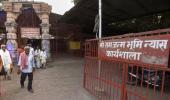
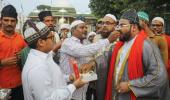


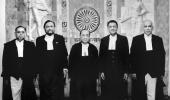



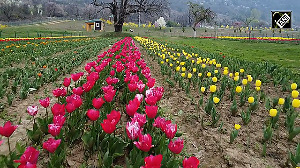
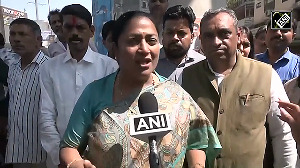
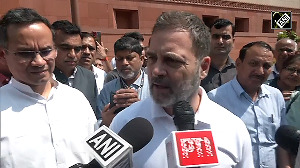
 © 2025
© 2025